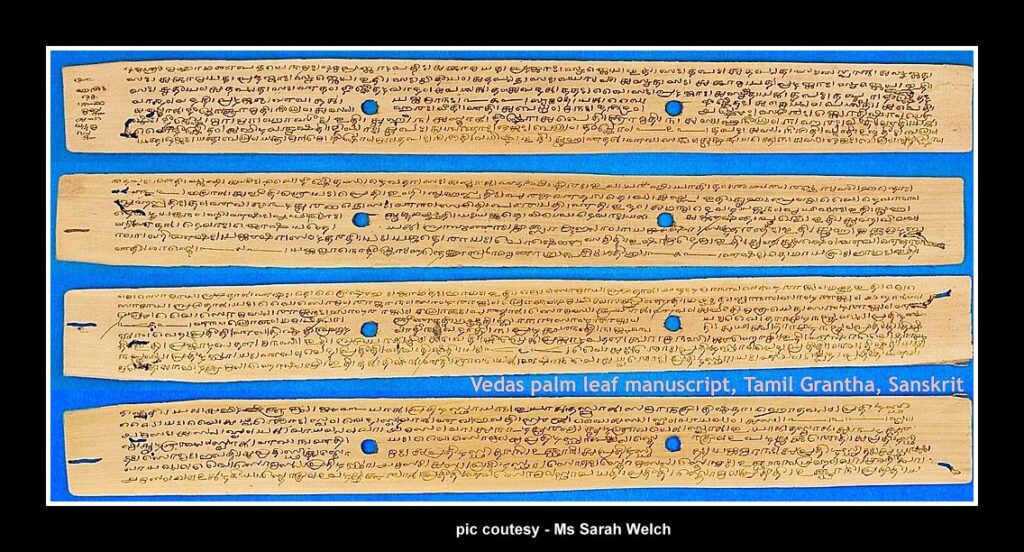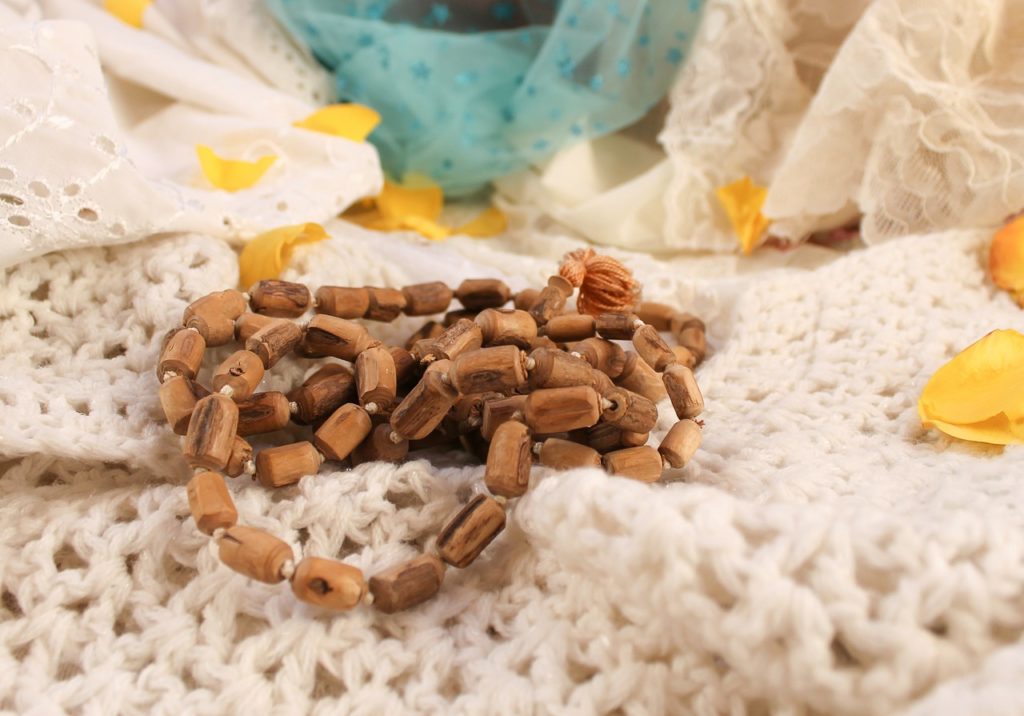
Meditation is a practice that has been around for centuries if not thousands of years, but has recently gained popularity as more and more people seek ways to improve their mental health and well-being. It involves focusing the mind, thought, or activity to achieve a state of relaxation and inner peace. From Hindus and Buddhist monks to modern-day celebrities, meditation is now practiced by millions of people worldwide. In this article, we will explore the different types of meditation techniques, including Mantra Meditation, based upon the ancient teachings provided in Bhagavad Gita, and the numerous benefits that can be gained from incorporating meditation into your daily routine. Meditation has the power, as described in Bhagavad Gita, to impart profound and enduring advantages in our lives. By engaging in this practice, we can effectively reduce stress levels, deepen our understanding of our emotional and physical discomforts, enhance our interpersonal relationships, sharpen our concentration, and cultivate self-compassion. This guide on Mantra meditation, inspired by the teachings in Bhagavad Gita, will take you on a transformative journey through the fundamentals, providing you with a comprehensive understanding of the techniques involved and the benefits that can be reaped. So, come join us as we embark on this transformative journey towards a more peaceful and fulfilling existence.
#1 Bhagavad Gita on the Ultimate Goal of Meditation : Attaining Inner Peace
The Bhagavad Gita, an ancient Hindu text, teaches us that the true mastery lies in conquering the mind, for only then can we achieve the perfection of life and attain inner peace. Those who attain such tranquility have a remarkable ability to view all aspects of life with equanimity, seeing happiness and distress, heat and cold, honor and dishonor as mere fleeting phenomena. According to the Bhagavad Gita, one who has conquered the mind regards everyone with an equal mind, be it a well-wisher, benefactor, neutral, mediator, envious, friend, enemy, pious, or sinner. The objective of meditation, as elucidated in the Bhagavad Gita, is to attain God, making Him the ultimate goal of one’s life. Through constant practice and detachment, and by regulating the activities of one’s mind and body, one can attain a state of transcendence, devoid of all material aspirations. Just as a lamp in a windless place does not flicker, the mind of a transcendentalist who has controlled it remains steady in meditation on God, achieving a state of samadhi. In this state, one can experience pure joy, relishing and rejoicing in the Self, and attaining boundless transcendental happiness through transcendental senses. Such a person is established in truth and never shaken, even in the midst of the greatest difficulties. This state of being is the actual freedom from all miseries arising from material contact, and it is the ultimate goal of meditation, as taught in the Bhagavad Gita (6.20-23).
#2 Essential Guidelines for Successful Meditation: Insights from the Bhagavad Gita
In the Bhagavad Gita (6.11-15), it is emphasized that for successful meditation, the yogi must find a secluded and tranquil place to sit, laying kusa grass or a soft cloth as a base. The seat should be situated in a sacred location, not too high or low, and the practitioner should focus on purifying their heart by controlling their mind, senses, and activities, and concentrating on God, making Him the ultimate goal of Life (manah samyamya mac-citto). By regulating their eating, sleeping, recreation, and work habits, one can mitigate all material pains through meditation. As a person disciplines their mental activities and becomes established in transcendence, they become well-versed in yoga, devoid of all material desires. To achieve success, one must engage with determination and faith, abandon all material desires, and control all senses by the mind. Gradually, step by step, one should become situated in trance by means of intelligence sustained by full conviction and fixed on the Self alone. By withdrawing the mind from its unsteady nature and bringing it back under the control of the Self, one can attain the highest perfection of transcendental happiness, beyond the mode of passion and freed from all reactions to past deeds. A true yogi observes God in all beings and sees every being in God, never separating from God and realizing their qualitative identity with the Supreme.

#3 Verdict of Arjuna – Controlling Mind is more difficult than controlling the wind
Arjuna, upon hearing the process of meditation as described by Krishna, expressed his doubts about the practicality and endurance of such a system. He acknowledged the restless, strong, and obstinate nature of the mind and compared it to the difficulty of subduing the wind. It is noteworthy that Arjuna was a highly capable warrior, proficient in all kinds of mystic weapons. This conversation took place in Dvapara Yuga, where people had more robust bodies and minds compared to those of us living in the Kali Yuga. Thus, if the techniques seemed challenging for Arjuna, they would undoubtedly be more so for us.
In response to Arjuna’s concerns, Krishna explained that controlling the mind was undoubtedly a difficult task, but it could be accomplished through suitable practice and detachment. Krishna then went on to describe the nature and actions of the highest transcendentalist – the yogi with unwavering faith, who constantly remains in Krishna’s remembrance and lovingly serves Him (God) with a transcendental mindset, is the most intimately connected with Him in yoga and is considered the highest of all yogis (6.47).
#4 Suitable Meditation Technique for the Present Age (Kali Yuga)
Krishna affirms that with the suitable practice and detachment, one can achieve control over the restless and stubborn mind, a task more arduous than taming the wind. However, in the current age of Kali, marked by violence, deception, and spiritual decline, adhering to the strict rules of meditation may seem unfeasible. Observing the strict rules and regulations of finding a sacred place, focusing on the Supersoul, restraining the senses and mind, observing celibacy, and remaining in solitude has become increasingly difficult in the present age. So what can become the suitable practice of achieving mind control in Kali Yuga? According to the Brhan Naradiya Purana, the only means of salvation in this era is the repetition of the holy names of Lord Hari, as the Kali Santarana Upanishad confirms the power of the ‘Hare Krishna Mahamantra’ to remove all inauspiciousness of Kali Yuga. In this age of discord and hypocrisy, the path to enlightenment has become more accessible, as chanting the holy names of the Lord is the key to transcendence.

harer-nama harer-nama harer-namaiva kevalam
kalau nasty-eva nasty-eva nasty-eva gatir anyatha
(Brhan Naradiya Purana)
–
In this age of Kali the only means of deliverance is chanting of the holy name of Lord Hari. There is no other way. There is no other way. There is no other way.
Hare krsna hare krsna krsna krsna hare hare
Hare rama hare rama rama rama hare hare
Iti sodasakam namnam kali kalmasa nasanam
Natah parataropayah sarva vedesu drsyate
(Kali Santarana Upanishad)
–
The sixteen syllables of the Hare Krishna Mahamantra: ‘Hare Krishna Hare Krishna Krishna Krishna Hare Hare, Hare Rama Hare Rama Rama Rama Hare Hare’ destroy all inauspiciousness in this age of Kali. This is the verdict of the Vedas.
To achieve mind control in Kali Yuga, the most powerful method is to chant the holy name of Lord Krishna (Hari), which is filled with His entire potency. This holy name is not different from the Lord Himself, and through its constant repetition, one can attain His association. Chanting this name or ‘Mantra Meditation’ is a potent means of purging the mind of all doubts and negative thoughts. As one hears more about Lord Krishna and His name, one becomes more enlightened and detached from worldly matters that distract the mind from Him. By detaching the mind from worldly activities and engaging it in spiritual pursuits, one can easily attain ‘Vairagya’, or detachment from materialism.
Kaler dosa nidhe rajann asti hy eko mahan gunah
Kirtanad eva krsnasya mukta sangha param vrajet
(Srimad Bhagavatam, 12.3.51)
–
My dear King, although Kali Yuga is an ocean of faults, yet there is one good quality about this age: Simply by chanting the holy names of Krishna, one gets liberated from material bondage and is promoted to the transcendental spiritual kingdom.
#5 How to Practice Mantra Meditation
To properly honor the holy name of Krishna, one must chant with proper devotion and understanding of its potency. The power of the holy name remains concealed when there is any doubt or uncertainty regarding its efficacy. Only those who have faith in the holy name of Sri Krishna can experience its divine grace, as it is an enigmatic mystery accessible only to the faithful. Devotees should strive to deepen their understanding of this sacred truth.
There exist two forms of mantra meditation known as Japa and Kirtan. Japa involves a tranquil and individual practice where one recites chants using prayer beads (described below). On the other hand, Kirtan is a lively communal meditation that revolves around the same sound vibration. It follows a call-and-response format and incorporates vibrant musical instruments. Below, we have provided a comprehensive description of how to effectively chant the Hare Krishna Mahamantra using prayer beads (japa).
One should chant the following Hare Krishna Mahamantra preferrably on Tulasi beads –
Hare Krishna Hare Krishna Krishna Krishna Hare Hare, Hare Rama Hare Rama Rama Rama Hare Hare
The Kali Santarana Upanishad declares the Hare Krishna Mahamantra as the destroyer of all inauspiciousness (iti sodasakam namnam kali kalmasa nashanam). Sri Chaitanya Mahaprabhu, the incarnation of the Supreme Lord, urges us to chant the holy name of Krishna incessantly and also to spread the message of the glory of chanting to others (yare dekho taare kaha Krishna upadesha…). It is imperative that we take refuge in Sri Chaitanya Mahaprabhu and His associates before commencing each round of the Hare Krishna Mahamantra. To do so, we must first chant the Pancha Tattva Mahamantra.

‘Jaya Sri Krishna Chaitanya, Prabhu Nityananda ,Sri Advaita, Gadadhara, Srivasa adi Gaura bhakta vrinda’
–
Translation – I offer my respectful obeisances unto Sri Chaitanya Mahaprabhu, Lord Nityananda, Sri Advaita, Gadadhara Pandit, Srivasa Thakura and all the devotees of Lord Chaitanya.
Chanting the holy names of Sri Chaitanya Mahaprabhu and His associates bestows upon us their causeless mercy enabling us to chant Krishna’s names without committing any offenses.
One complete cycle of chanting on a string of 108 beads is called a round, and it is recommended to chant the entire Hare Krishna Mahamantra on each bead before moving on to the next one. To reap the maximum benefits, it is advised to chant a minimum of 16 rounds of the Hare Krishna Mahamantra daily in the present era. However, beginners can start with a smaller number of rounds and gradually increase the count over time. Before beginning each round of the Hare Krishna Mahamantra, it is crucial to chant the Pancha Tattva Mantra at least once.
#6 Meaning of Hare Krishna Maha Mantra
The transcendental name of Hari, much like fire that burns an object upon contact, has the power to eradicate or “burn up” all the sins of those who are caught up in materialistic pursuits. This divine name not only removes ignorance but also reveals the blissful form of the Lord. Hari, as a term, refers to an enchanting personality whose divine qualities captivate the minds of all beings in the universe. His youthful, beautiful form is so attractive that even the Cupids are mesmerized by it. The term “Hare” is the vocative form of Hari.
In addition to its other meanings, the term “Hare” can also refer to Hara or Srimati Radhika, the daughter of Vrishabhanu. She is known for stealing the mind of Hari during the rasa dance with her beautiful form and loving affection. The term “Hare” is the vocative form of Hara.

The term “Krishna” is derived from the root “Krs,” which means “all-attractive,” and “na,” which refers to “supreme bliss.” When combined, they form the word “Krishna,” which represents the all-attractive and supremely blissful Supreme Personality of Godhead, Sri Krishna. He is also known as Nandanandana and Sri Govinda, with lotus-like eyes and a dark blue complexion. For the Vrajavasis, Krishna is the sole source of bliss.
The term “Rama” implies “ramante,” meaning the embodiment of unlimited pleasure. Sri Krishna, who is highly skilled in loving affairs and is worshiped for His amorous pastimes, always takes pleasure in the company of Radha. This is why He is referred to as Rama (Radharamana Rama).
The supreme brahman is also recognized as ‘Rama’, as yogis find joy in contemplating His eternal, blissful form.
Hare Krishna Hare Krishna Krishna Krishna Hare Hare
Hare Rama Hare Rama Rama Rama Hare Hare
O Radha, please draw my mind towards you and release me from the material world.
O Krishna, please attract my mind to you.
O Radha, captivate my heart with your sweetness.
O Krishna, purify my mind by imparting the knowledge of how to worship you through your pure devotee.
O Krishna, grant me the firmness to appreciate your name, qualities, and pastimes.
O Krishna, may I develop a taste for serving you.
O Radha, make me eligible to serve you.
O Radha, teach me how I can serve you.
O Radha, let me hear about your intimate pastimes with your beloved.
O Rama (Krishna), let me hear about your intimate pastimes with your beloved.
O Radha, reveal your pastimes with your beloved to me.
O Rama, reveal your pastimes with your beloved to me.
O Rama, engage me in remembering your name, form, qualities, and pastimes.
O Rama, make me eligible to serve you.
O Radha, be pleased with me.
O Radha, be pleased with me.